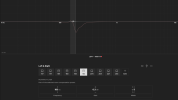I just did my first measurement with the HifiBerry Digi2 Pro with DSP Add-on. The process was smooth (but noisy ;-)). And the result sounds okay. With the note that I haven't done any thorough listening yet.
However, when I had a look at the profile that was generated, I was a bit surprised. Note that I don't know much about PEQ and room correction. So this may be due to lack of knowledge.

As can be seen in the image, there are 3 frequencies with 2 or more filters each: 147Hz, 183Hz and 204Hz. They have different Gain settings, but the same (per frequency) Q and filter type.
Is this ok? Why three filters for the same frequency and not just one? Would like to understand what's the reason for this. If there is a reason.
However, when I had a look at the profile that was generated, I was a bit surprised. Note that I don't know much about PEQ and room correction. So this may be due to lack of knowledge.

As can be seen in the image, there are 3 frequencies with 2 or more filters each: 147Hz, 183Hz and 204Hz. They have different Gain settings, but the same (per frequency) Q and filter type.
Is this ok? Why three filters for the same frequency and not just one? Would like to understand what's the reason for this. If there is a reason.
